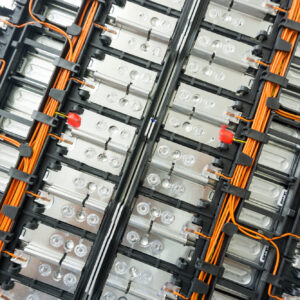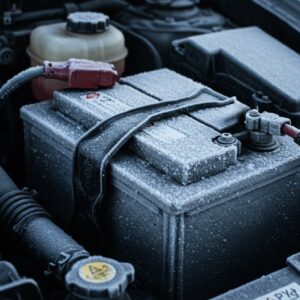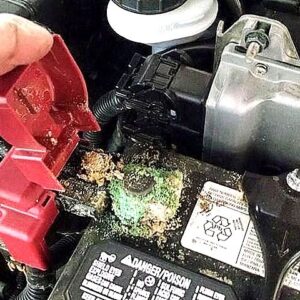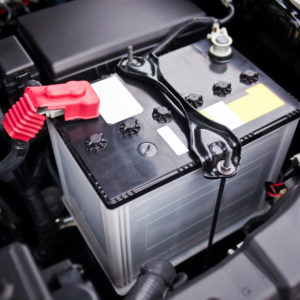Extreme caution: Do not try to remove the high-voltage battery. The battery is filled with coolant and high voltage and is extremely heavy and dangerous. Don’t even jack the car up using a floor jack like you would other cars or you can destroy the battery and set fire to the car.
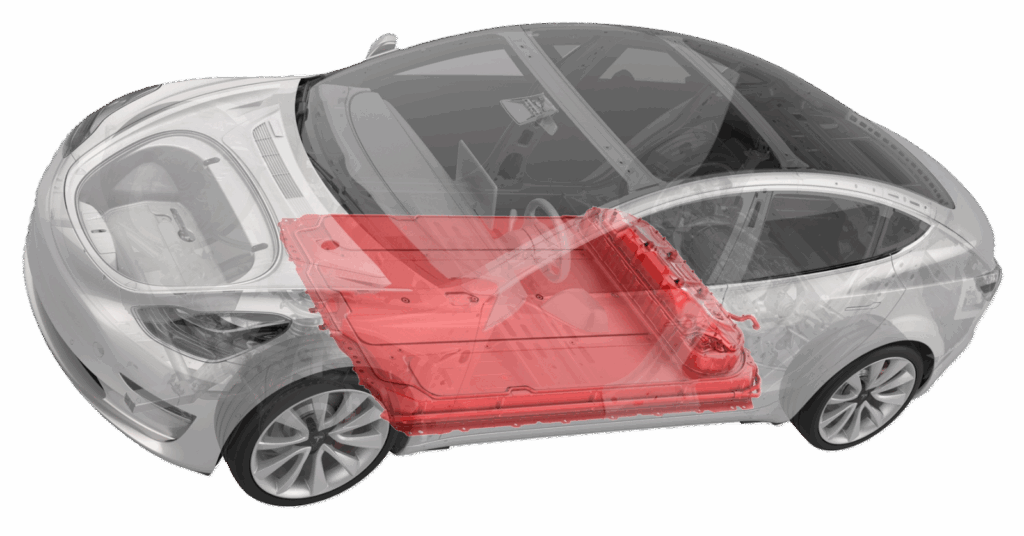
The high-voltage battery connection points and contactors on a Tesla 3 are in a housing under the rear seat cushion, but the rest of the battery forms the entire lower floorpan of the vehicle (see illustration).
The low-voltage 12-volt battery, which is the focus of this article, can be found under the center of the cabin intake duct in front of the windshield.
Tips On How to Access a Tesla Battery
For a routine 12V battery swap, Tesla’s official service manuals often only require disconnecting the 12V system itself, provided no HV components are being touched.
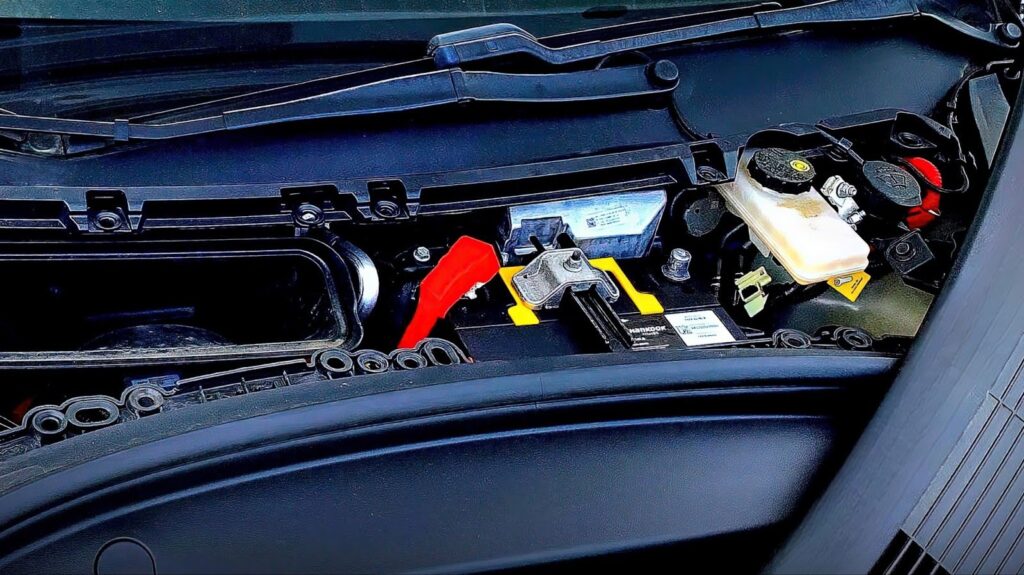
Any information provided on this Website is for informational purposes only and is not intended to replace consultation with a professional mechanic. The accuracy and timeliness of the information may change from the time of publication.



